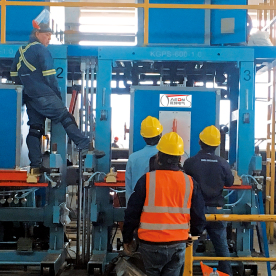[Variable Impedor Device]Exploring the Versatility and Applications of Variable Impedor Devices in Modern Electronic Systems
News 2024-10-22

Exploring the Versatility and Applications of Variable Impedor Devices in Modern Electronic Systems
In the fast-evolving landscape of electronic engineering, where adaptability and efficiency are paramount, the Variable Impedor Device (VID) emerges as a crucial component. Well-defined and adaptable, VIDs have become indispensable in various applications, from telecommunications to electric vehicles. This article dives deep into the nature, functions, and applications of Variable Impedor Devices, shedding light on their significance in contemporary electronics.
Understanding Variable Impedor Devices
At its core, a Variable Impedor Device is a component used in electronic circuits that allows for the manipulation of impedance within a given range. Impedance, a fundamental concept in electrical engineering, combines resistance, inductance, and capacitance in an alternating current (AC) circuit. By varying the impedance, these devices can optimize the performance of electronic systems, improving functionality and efficiency.
Variable Impedor Devices can be classified into several types, including electronic controllers, mechanical potentiometers, and digitally controlled devices. Each type serves different applications, ranging from simple volume controls in audio equipment to complex signal processing in communication technologies.
Mechanism of Variable Impedor Devices
The variable nature of these devices can be achieved through various mechanisms. For instance, mechanical variable resistors allow users to manually adjust resistance levels, thus changing the impedance. In contrast, more advanced VID systems use microcontrollers and digital signal processing (DSP) to alter impedance automatically based on specific parameters or system demands. This adaptability is key to many modern applications, allowing systems to respond efficiently to varying conditions.
One of the most exciting developments in this area is the integration of Variable Impedor Devices with smart technologies. By employing algorithms and automated systems, VIDs can dynamically adjust impedance in real-time, providing optimal performance without requiring human intervention.

Exploring the Versatility and Applications of Variable Impedor Devices in Modern Electronic Systems
1. **Telecommunications**: In the realm of telecommunications, signal integrity is paramount. Variable Impedor Devices play a critical role in ensuring that signals are properly transmitted over varying distances and mediums. By adjusting impedance, VIDs help minimize signal loss and reflectance, critical for maintaining the quality of voice and data communications.
2. **Audio Engineering**: In audio systems, sound quality can be significantly enhanced through the use of Variable Impedor Devices. These devices are often used in equalizers and mixers, allowing sound engineers to adjust the impedance levels to create the perfect sound profile. This capability enables musicians and sound professionals to tailor their audio output to suit different environments, from concert halls to recording studios.
3. **Electric Vehicles**: As the automotive industry pivots towards electric vehicles (EVs), Variable Impedor Devices are becoming increasingly important. They are employed in electric drives and power management systems, ensuring efficient energy distribution. The ability to modify impedance in real-time allows EVs to optimize power consumption and enhance overall performance.
4. **Medical Devices**: In the medical field, VIDs are used in diagnostic equipment and therapeutic devices. Variable impedance can improve the accuracy and efficiency of devices such as electrocardiograms (ECGs) and transcutaneous electrical nerve stimulation (TENS) units. By enabling precise control over impedance, these devices can provide better patient outcomes, allowing for improved monitoring and treatment.
5. **Wireless Power Transfer**: The advent of wireless power transfer technologies also benefits from the integration of Variable Impedor Devices. By manipulating impedance, these devices enhance the efficiency of power transfer systems, ensuring that energy is transmitted efficiently, reducing losses and improving overall system effectiveness.
The Future of Variable Impedor Devices
As technology continues to advance, the future of Variable Impedor Devices looks promising. Increasing miniaturization and integration capabilities suggest that we will see even more applications across diverse sectors. Enhanced computational power will enable more sophisticated algorithms that allow VIDs to adapt to more complex and dynamic environments.
Moreover, with the ongoing push towards automation and smart technologies, VIDs will likely play a critical role in the development of autonomous systems and smart grids. The potential for integrating VIDs with Artificial Intelligence (AI) and machine learning opens doors for unprecedented efficiency in various electronic applications.
Conclusion

